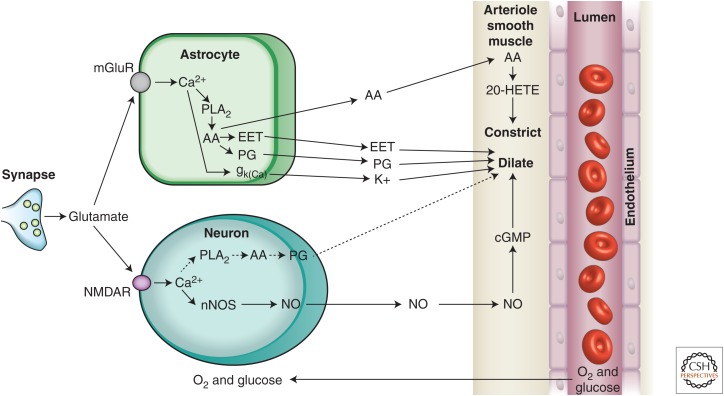Figure 2.
Summary of signaling pathways that mediate neurovascular coupling in the brain. Synaptically released glutamate acts on N-methyl-d-aspartate receptors (NMDARs) in neurons to increase [Ca2+]i, causing neuronal nitric oxide synthase (nNOS) to release nitric oxide (NO), which activates smooth muscle guanylate cyclase. Raised [Ca2+]i may also (dashed line) generate arachidonic acid (AA) from phospholipase A2 (PLA2), which is converted to prostaglandins (PG) that dilate vessels. Glutamate also raises [Ca2+]i in astrocytes by activating metabotropic glutamate receptors (mGluR), generating arachidonic acid, and three types of AA metabolites: prostaglandins and EETs in astrocytes, which dilate vessels, and 20-HETE in smooth muscle, which constricts vessels. An increase of [Ca2+]i in astrocyte endfeet may also activate Ca2+-gated K+ channels (gk(Ca), alternative abbreviation, BK), releasing K+, which dilates vessels. (From Attwell et al. 2010; reprinted, with permission, from the authors.)

